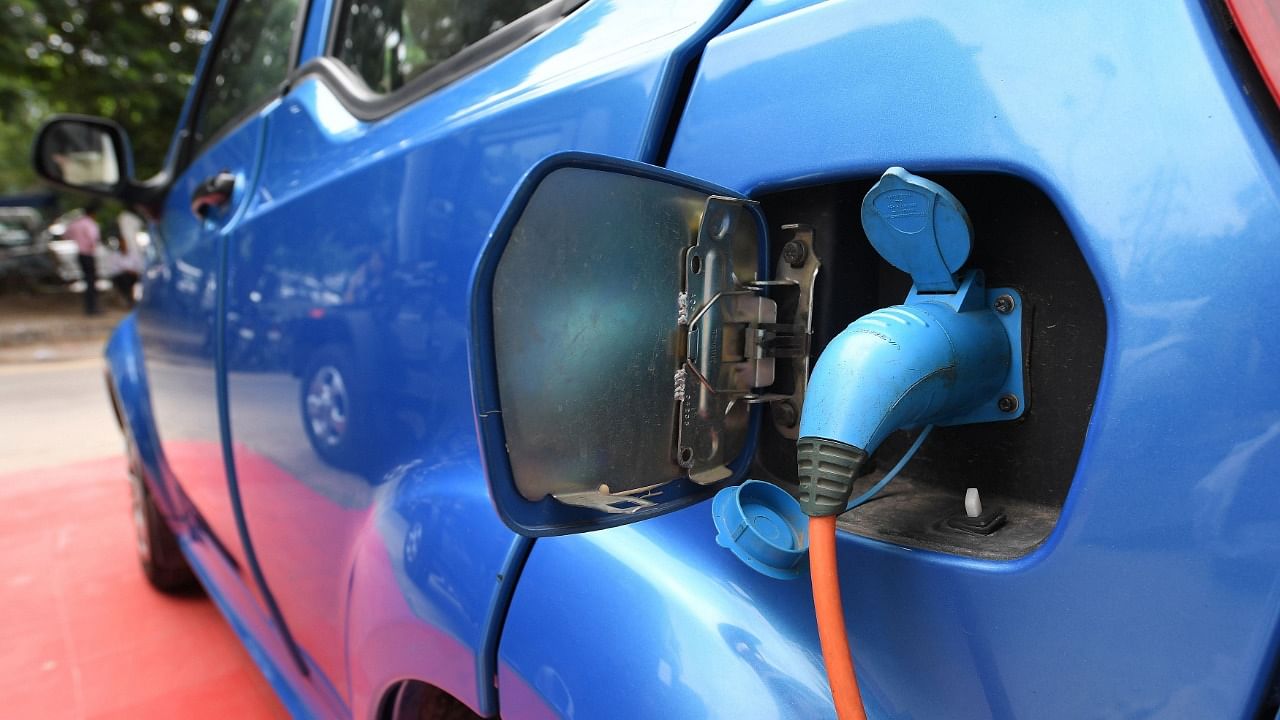
Government think tank NITI Aayog unveiled a draft of the battery-swapping policy last month and opened it up for feedback until June 5. DH spoke with various stakeholders in the electric vehicle ecosystem to understand how they grade the draft policy and the issues it has failed to address.
Selling EVs without batteries
The draft spoke about the Battery-as-a-Service (BaaS) model that will allow users to buy EVs without batteries and then sign up for battery subscription services. This will reduce EV costs as batteries account for 40-50 per cent of their price tags.
While Sohinder Gill, the chief executive of India’s top electric two-wheeler maker Hero Electric, agrees that battery swapping can push commercial users to be early adopters, he is sceptical about its application in the personal mobility space.
“For B2C users, they will need a greater density of swap stations and hence higher investments,” Gill said.
The option of selling EVs without batteries might hurt EV makers too.
“Negatives are that there are no big margins for the OEMs since it will be a standard vehicle without the battery where the business will have to be driven by volumes,” said Deloitte India Partner and Automotive Leader Rajeev Singh.
Capital-intensive project
The BaaS model will require a high capital outlay since the battery providers will need to keep an inventory of at least 1.4 to 1.6 times the number of batteries required in a traditional model (charging an EV with a fixed battery), Singh said.
Financial support from policymakers was also found wanting. Battery-swapping network provider RACEnergy‘s co-founder, Gautham Maheswaran, said that while the draft indicates subsidies for battery providers, there aren’t any for those setting up the battery-swapping infrastructure.
External financing support from the industry, too, is crucial.
“We need feasible financing solutions through banks and NBFCs so that startups and companies can set up battery swapping at scale,” said Vasudha Madhavan, founder of e-mobility focused investment bank Ostara Advisors.
Balancing standards and innovation
When the government first revealed its intention of introducing interoperability standards, industry players raised concerns that the standards at a nascent stage could stifle innovation. However, the draft policy has allayed those fears.
“Rather than mandating a rigid set of technical and operational requirements to foster interoperability, this policy will allow for multiple distinct interoperable solutions to arise, which would encourage market-led innovations,” said Chetan Maini, the co-founder of swappable-battery provider SUN Mobility.
Strong standards will also pave the way for safer batteries, stakeholders agreed.
Battery safety
The policy prescribes “rigorous testing” for swappable batteries since they will be subject to multiple coupling/decoupling processes at the connectors.
Hero Electric’s Gill said battery life and safety aspects could be better handled in a swap station rather than inside the e-scooters. “The swap stations can deploy pre/post charge cooling and regulated charging in a better manner,” he explained.
Others pointed out that the advanced battery management systems suiting Indian needs will be key to a safer e-mobility experience.
“Swapping a battery pack in your 2W or 3W safely is not common knowledge yet. We need to ensure on-ground training for swap station personnel and EV users to ensure no mishaps and avoid battery damage,” said Madhavan.
Some experts also pushed for better regulations on evolving EV technologies.
Sagar Mitra, an IIT Bombay professor who is researching lithium-ion cells, said separate safety norms for fast-charging batteries should be developed.
“In the hot climatic zone, few chemistries can sustain such a wide range of temperature. Without much thermal control, many such chemistries can be fatal during charging or handling.”
End-of-life usage of batteries
Mitra also warned against ignoring the huge volumes of battery waste that swapping would likely generate.
“One should carefully craft the policy to ensure no end-of-life batteries from BSS (battery swapping stations) are scrapped in landfills. We should monitor each battery pack and inside cells’ whereabouts after the EOL and prepare guidelines,” he said
While the policy talked about reusing batteries and recycling them to extract the metals, it missed out on one aspect.
“It doesn’t talk about the refurbishment. When certain cells in a battery don’t perform well, identification and refurbishment of those batteries by replacing those cells will be key in the battery swapping system,” Singh pointed out.
“There should be a more accurate policy on the cost-bearing capacity of each stakeholder, which is missing here,” Mitra added.
Watch the latest DH Videos here: